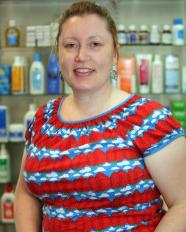
IMAGE: While paracetamol was the most common substance of enquiry for calls to the National Poisons Centre in 2018, new research reveals most New Zealanders have large quantities of the painkiller…
view more
Credit: Dr Eeva-Katri Kumpula
While paracetamol was the most common substance of enquiry for calls to the National Poisons Centre in 2018, new research reveals most New Zealanders have large quantities of the painkiller stockpiled in their homes.
In 2018, the New Zealand National Poisons Centre based at the University of Otago in Dunedin provided assessment and advice for 64,358 enquiries, a number similar to previous years, a new study shows.
Most calls to the Poisons Centre were related to substance exposures involving very young patients with half aged under 5 years. Most reported exposures occurred in the patient’s own home and were unintentional and most were advised to self-treat the exposure at home, or that no treatment was needed.
Paracetamol was the most frequently reported substance in all calls to the Poisons Centre and searches of the poisons information database, which is used by healthcare providers in their management of poisoned patients.
University of Otago Postdoctoral Fellow Dr Eeva-Katri Kumpula led the analysis of enquiries made to the Poisons Centre as well as an entirely separate study funded by Oakley Mental Health Research Foundation, investigating stocks of paracetamol stored in New Zealanders’ homes.
While the two studies are in no way linked, they were both recently published and Dr Kumpula says the findings are not surprising given the results from both studies.
The survey of 201 homes throughout New Zealand, showed a large majority had paracetamol stocks readily accessible, with most having been obtained with a prescription.
Dr Kumpula says this is not surprising as the co-payment for a prescription of paracetamol is only $5 for up to three month’s supply or 360g of paracetamol in total.
Based on the study sample, researchers estimate about a third of New Zealand households have 30g or more of prescribed paracetamol present. Only 27 of the 201 households surveyed had no paracetamol products, highlighting the high prevalence of the medication in homes.
Paracetamol is mostly safe, when used as instructed. It is important that people check with their pharmacist or doctor as to the dosage and frequency of use and when using liquid paracetamol Dr Kumpula recommends using a proper measuring device, not a spoon.
The study highlights the importance of assessing whether and how much paracetamol is truly needed when prescribing and dispensing the medication, she says.
“Ensuring people have sufficient access to paracetamol for pain management needs to be balanced with preventing unnecessary accumulation of unused stock in households to minimise inappropriate use such as for intentional self-poisoning.
“Prescribers and pharmacists need to be aware of the risks of such accumulation and assess the therapeutic needs of their patients.”
Public initiatives should be rolled out regularly to encourage people to return unused or expired medicines for pharmacies for safe disposal, the study concludes.
The National Poisons Centre is available 24/7 to assist the public and medical professionals in the management of poisonings. For the public, advice is given on whether further medical care is needed and appropriate first aid measures. For healthcare professionals treating patients in real time, advice from practicing clinical toxicologists is immediately available over the phone and also via the centre’s poisons information database.
###
For further information, contact:
Dr Eeva-Katri Kumpula
Postdoctoral fellow
Tel + 64 3 479 5168
Email [email protected]
Liane Topham-Kindley
Senior Communications Adviser
Tel +64 3 479 9065
Mob +64 21 279 9065
Email [email protected]
TDnews















